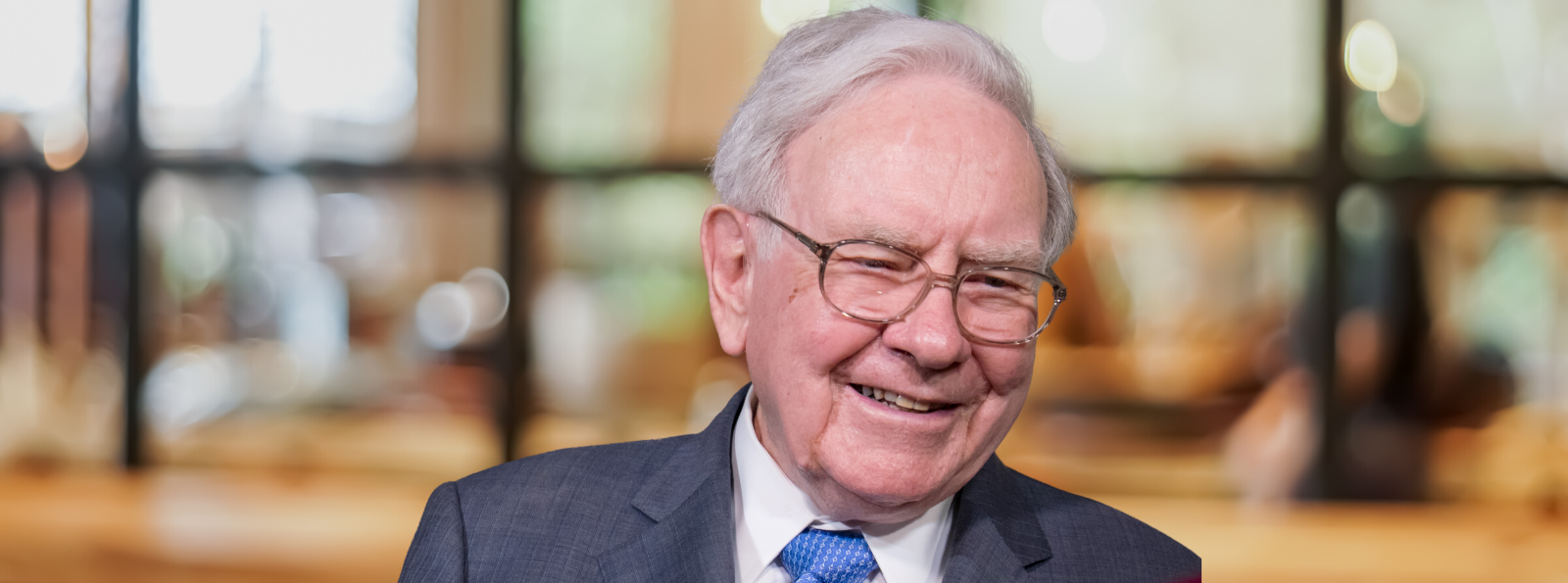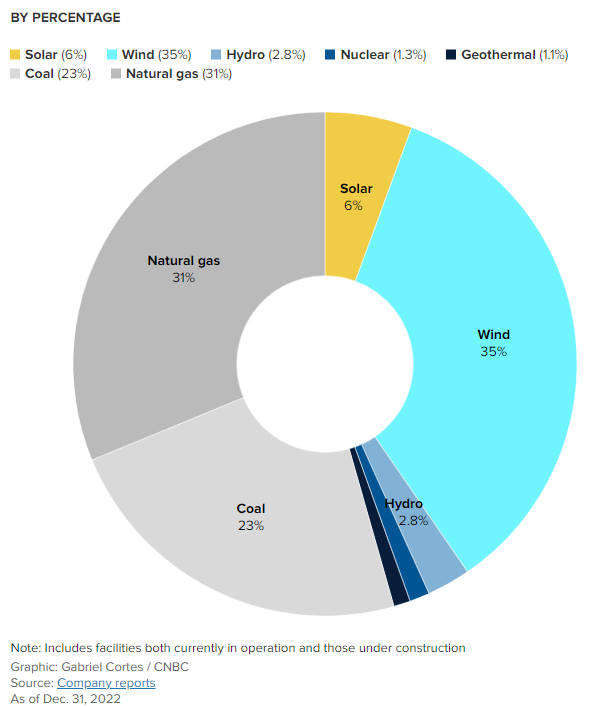How to invest like Buffett on the ASX
There’s a reason why Warren Buffett and his right-hand man Charlie Munger have legendary status globally as investment gurus. After all, Berkshire Hathaway has returned 19.8% pa on average since 1965, compared to 9.9% for the S&P 500. It’s an extraordinary track record.
And this all goes before noting that Buffett and Munger have been doing it all longer than anyone else still in the game. Munger is 99 years old while Buffett is 93 years old and both are still active in the management of Berkshire Hathaway.
.png)
Courtesy of Berkshire Hathaway’s annual reports and 13F filings, we have a reasonable understanding of the composition of Buffett’s formidable portfolio – if not all the fine details, but can you actually replicate it on the ASX?
In this wire, I’ll have a go – and while it might not be a perfect replication, the ASX offers more than you might expect in the way of a Buffett-style portfolio.
Please note any funds referenced are not recommendations and you should do your own research to see what is suitable for your needs and circumstances.
The composition of Berkshire Hathway
When we talk about Berkshire Hathaway, there are two things that immediately come to mind. Apple (NASDAQ: AAPL) and the S&P 500 Index.
Why is that?
There’s a simple explanation. Apple is the biggest single equity investment in Buffett’s portfolio at 50.04%.
As for the S&P 500 Index, Buffett has reiterated his view many times that investors could do worse than simply investing in the S&P500 index or in fact, any index fund investment.
But to quote him more specifically: “In my view, for most people, the best thing to do is to own the S&P 500 index fund. People will try and sell you other things because there’s more money in it for them if they do,” Buffett told investors at the Berkshire Hathaway Annual Shareholder Meeting 2020.
It has even been reported that his own will stipulates that his fortunes be invested in the S&P 500 (90%) and short-term government bonds (10%). Both of which can be accessed on the ASX of course, but there is more to Buffett’s portfolio than index funds and bonds.
You can see Berkshire Hathaway’s asset composition in the extract below from its third-quarter report.
Here’s a quick overview of Berkshire Hathaway’s assets based on its third-quarter report.

For the average investor, let's just focus on what you might be able to replicate in some format, which follows:
- Equities
- Fixed maturity securities
- US Treasury Bills
- Cash and cash equivalents
- Railroad, utilities and energy.
Buy the companies that Buffett likes for the equity portion
Livewire’s Kerry Sun recently explored Berkshire Hathaway’s 13F filings which are typically very enlightening on Buffett’s market and company views.
We know therefore that Berkshire Hathaway’s top 5 holdings are:
- Apple 50.04%
- Bank of America (NYSE: BAC) 9.03%
- American Express (NYSE: AXP) 7.22%
- Coca-Cola (NYSE: COKE) 7.15%
- Chevron Group (NYSE: CVX) 5.93%
With these representing just shy of 80% of the equities portfolio, focusing on exposure to these 5 stocks gives you the bulk of the exposure.
Getting these on the ASX requires an indirect approach using listed funds, like ETFs, LICs or LITs. It’s not a pure exposure, so bear in mind you aren’t getting exactly the same performance that Buffett is enjoying either. Some funds that include all of these companies in their remit are:
- iShares S&P 500 ETF (ASX: IVV)
- Betashares S&P 500 Equal Weight ETF (ASX: QUS)
- Vanguard US Total Market Shares Index ETF (ASX: VTS)
You'll notice I didn't put the NASDAQ 100 options in this list. That is because they don't include the banks. However, Buffett is known for being a big proponent of some of the biggest tech companies so you could also consider tech-focused investments, which include the likes of Apple and Amazon (NASDAQ: AMZN). Some examples include:
Fixed maturity securities and US Treasury Bills
While Berkshire Hathaway has some fixed interest investments, this is by far outweighed by the substantial amount in short-term Treasury Bills.
The equivalent on the ASX is the recently launched VanEck 1-3 Month US Treasury Bond ETF (ASX: TBIL).
For longer-term fixed-interest exposure in the US, some examples include:
- Global X ETFs USD Corporate Bond ETF (ASX: USIG)
- Betashares US Treasury Bond 7-10 year Currency Hedged ETF (ASX: US10)
- Vanguard Global Aggregate Bond Index (Hedged) ETF (ASX: VBND) (noting this will give you broader country exposure than the US)
Cash and cash equivalents
You can look at cash and cash equivalents in a few ways. This might include dry powder for investments along with currency and term deposit-style investments.
Two cash ETFs on the ASX include:
There are ETFs that also invest in and track the exchange rates of foreign currencies like the British Pound or US Dollar, such as Betashares US Dollar ETF (ASX: USD).
Railroad, utilities and energy
Berkshire Hathaway owns BNSF railway, one of the largest freight railway networks in the US. If you’re looking for an Australian equivalent, the largest is rail freight operator Aurizon (ASX: AZJ). Some other companies with exposure to rail freight include Kelsian Group (ASX: KLS) and Atlas Arteria (ASX: ALX).
Berkshire Hathaway also has a controlling stake in Berkshire Energy which offers power via coal, gas, steam and renewables like wind and solar. In fact, more than 40% of its owned generation capacity came from wind and solar in 2022 – particularly wind which has benefited from US Government tax incentives.

Australia is no slouch on the energy company front, with companies like AGL (ASX: AGL) and Origin Energy (ASX: ORG) covering the spectrum from older energy to renewables. Some options that have much greater exposure to renewable energy include Genex Power (ASX: GNX) and Meridian Energy (ASX: MEZ).
You could also take a broader approach to this by investing across essential infrastructure through ETFs like Vanguard Global Infrastructure ETF (ASX: VBLD) and VanEck Vectors FTSE Global Infrastructure (Hedged) ETF (ASX: IFRA).
Too much work? How to simply buy Berkshire Hathway
While Berkshire Hathaway (NASDAQ: BRK/A and NASDAQ: BRK/B) is obviously not listed on the ASX, you can still find exposure to it rather than trying to build the portfolio yourself.
A range of listed options on the ASX include Berkshire Hathaway in their underlying portfolios. Two include:
- VanEck Morningstar Wide Moat ETF (ASX: MOAT)
- Global Masters Fund Limited (ASX: GFL) (its principal stake is Berkshire Hathaway)
Or you could just take the approach Buffett has directed in his will and buy 90% of an S&P 500 ETF and 10% in 1-3 month US Treasury Bills. It’s worth noting this is a high-growth strategy – the fortunes of Warren Buffett may be well equipped to manage the volatility of a 90% equities portfolio, while the average investor may not.
A final word of Buffett wisdom
If Australian investors really want to think like Buffett, some of the key aspects of his approach can be distilled from this.
- Focus on quality purchases with diversified revenue streams.
- Think long-term in your strategy and purchases.
- Don’t be afraid to step into the market for the right company at a good price, even in volatile times.
And it’s worth noting that the brightest – Buffett included – ask for help when it’s not their area of expertise.
Ready to start your research? Check out Livewire's fund tool.
3 topics
29 stocks mentioned
13 funds mentioned
1 contributor mentioned

